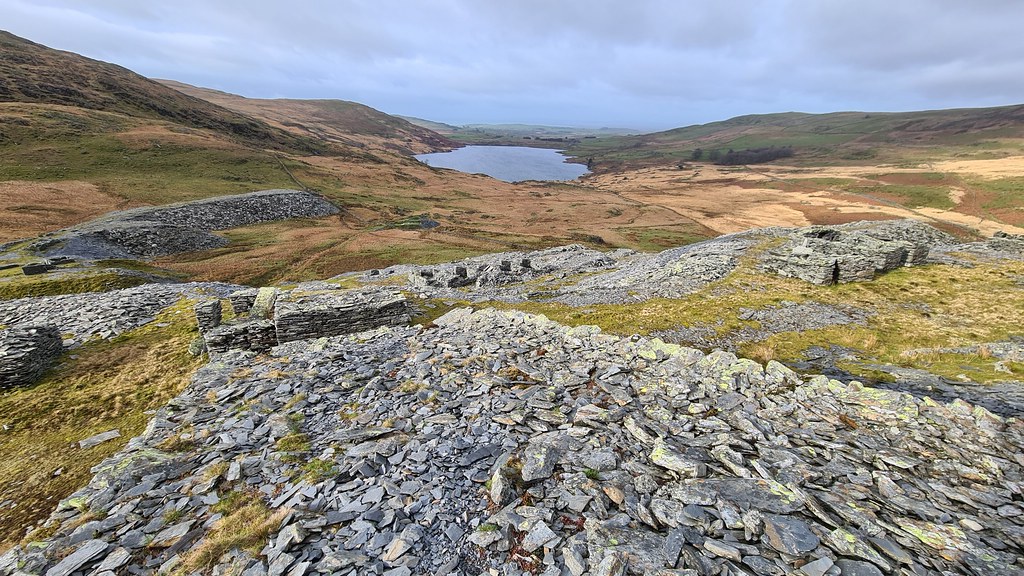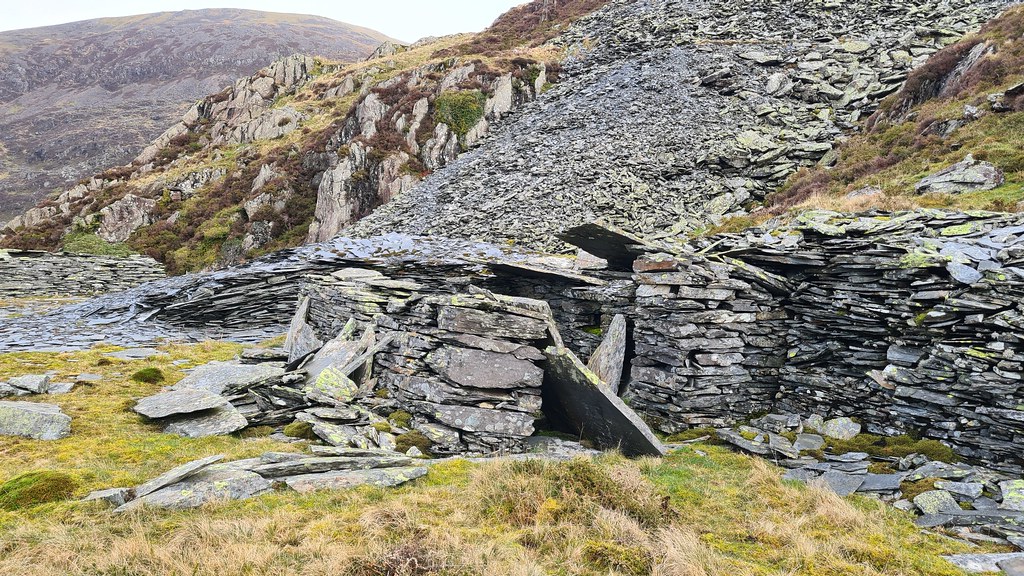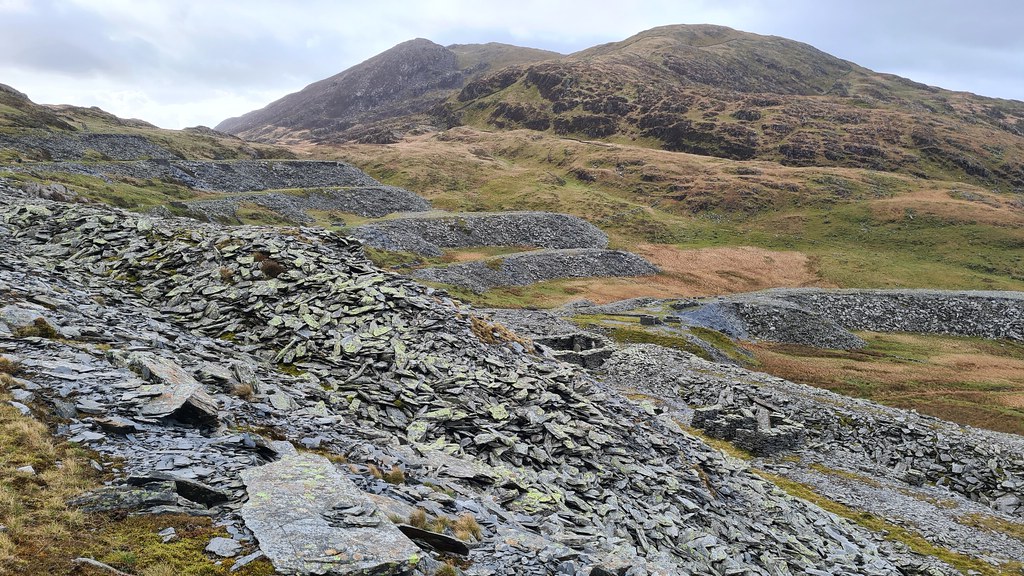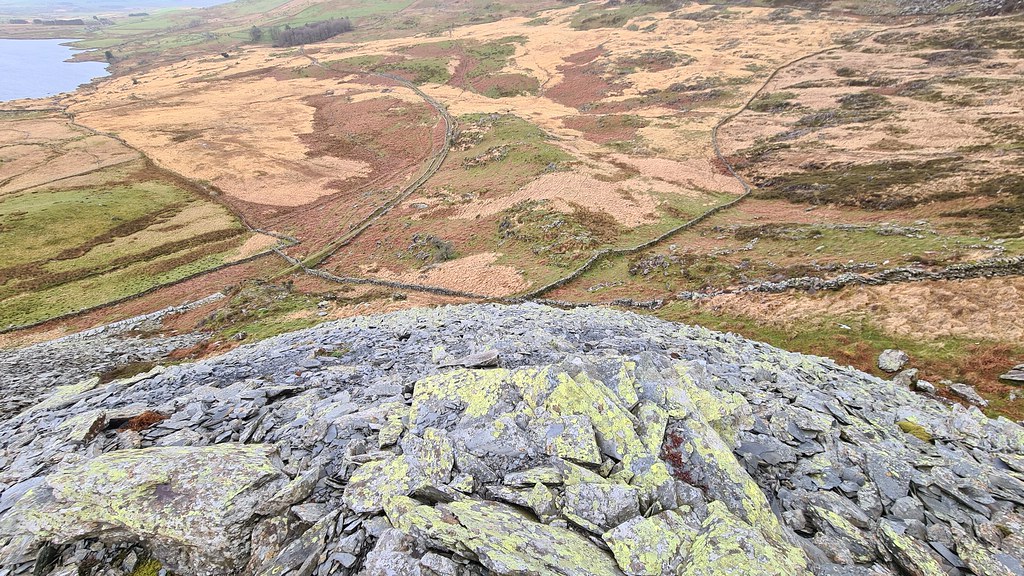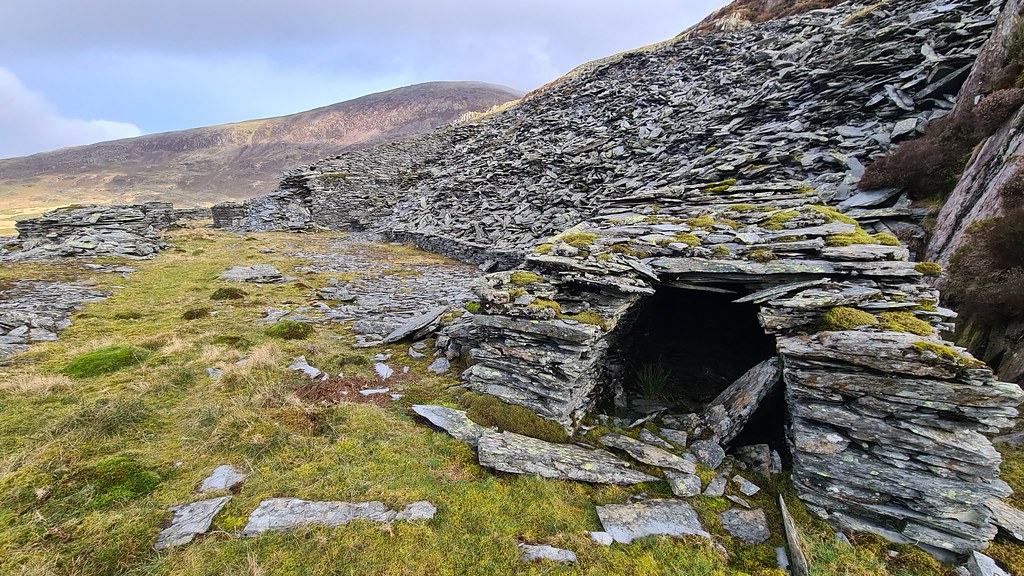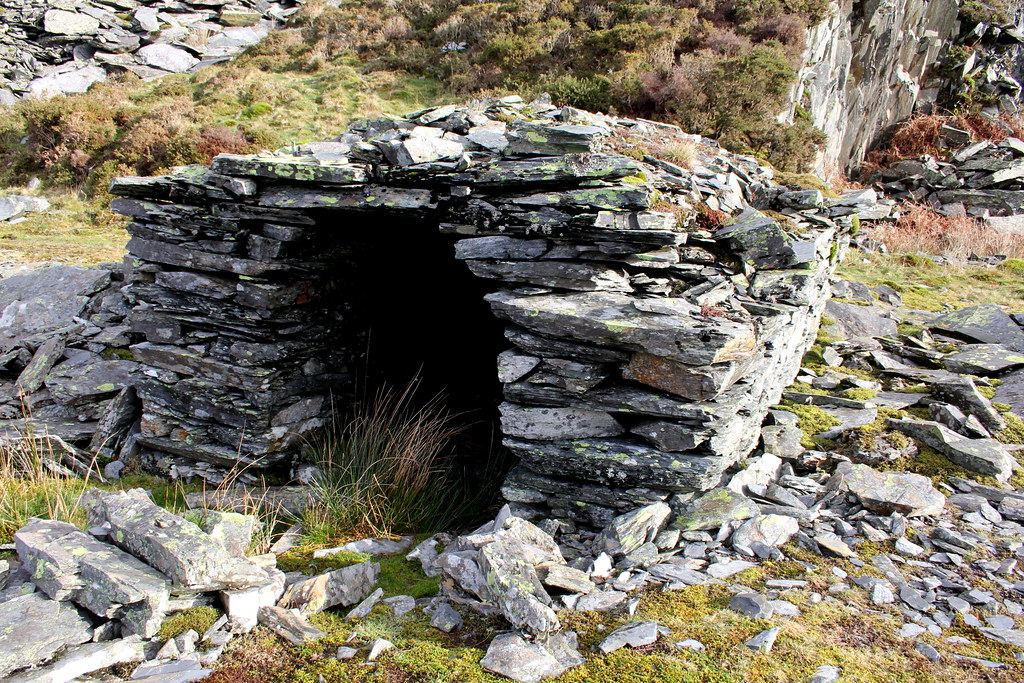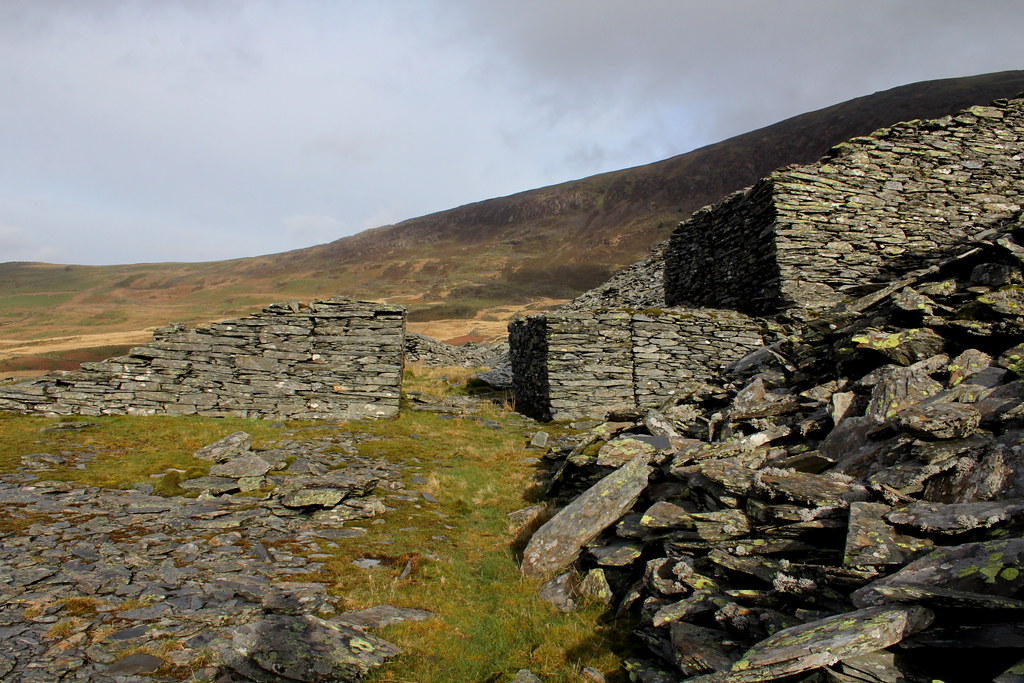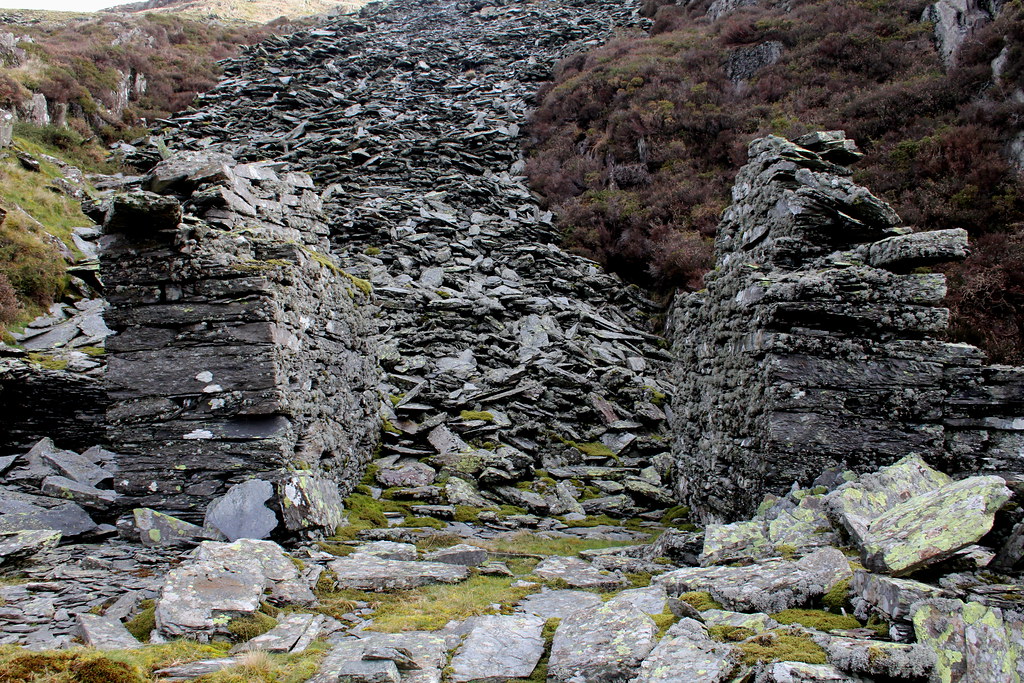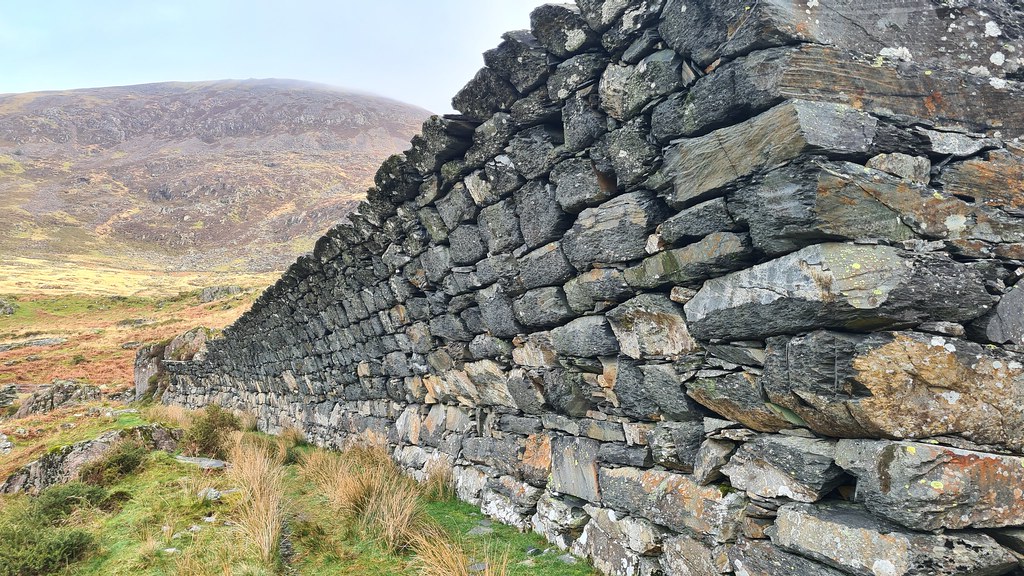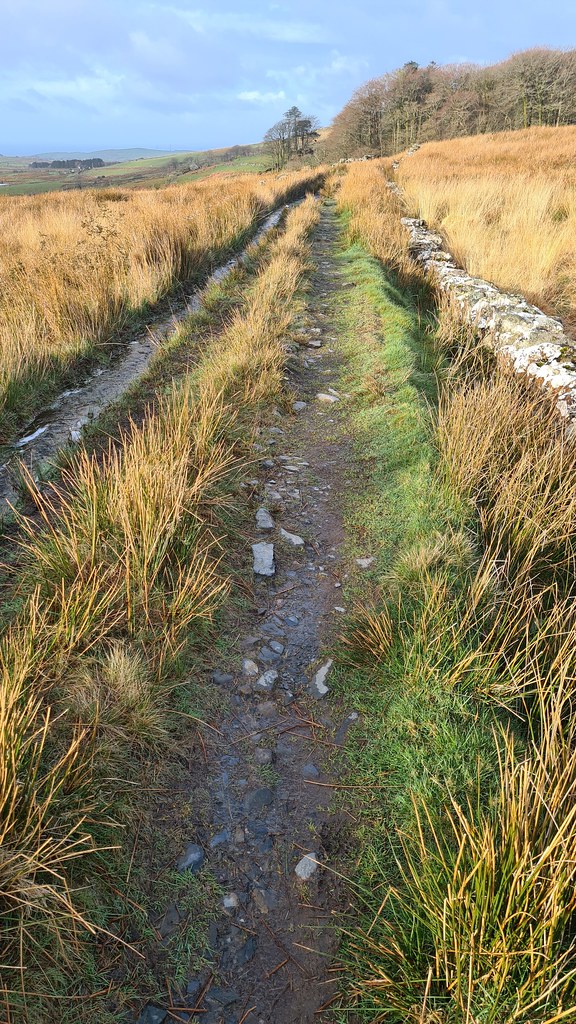- Joined
- Jan 6, 2013
- Messages
- 5,574
- Reaction score
- 11,213
1. The History
Cwm Ystradllyn is a picturesque valley located six miles north of Portmadog, Gwynedd, North Wales. Here can be found Gorseddau Slate Quarry, at the head of a remotely located valley. Quarrying first started here in 1807, but only on a very modest scale. The quarry was latterly offered for sale in 1836. However, it wasn’t until two decades later that things started to move up a gear, between 1855 and 1857 during the “Golden Age” of the slate industry in Gwynedd. Robert Gill and John Harris took out a £2,000 lease on the site and established the Bangor & Portmadoc Slate and Slate Slab Company. Raising over £125,500 from investors, they enlisted the services of Henry Tobias Tschudy von Ulster, a Bavarian mining engineer, as the quarry was worked extensively using a technique pioneered at Penrhyn Quarryin, using stepped benches known as ‘galleries’. From the top of the quarry to the bottom, a sequence of eight terraces were connected by a spinal counter-balance incline. Each terrace then contained a gallery, trimming sheds, trimming waste tips and rubble tips stretching out beyond.
Extract from 1880 O/S map showing the quarry as abandoned:
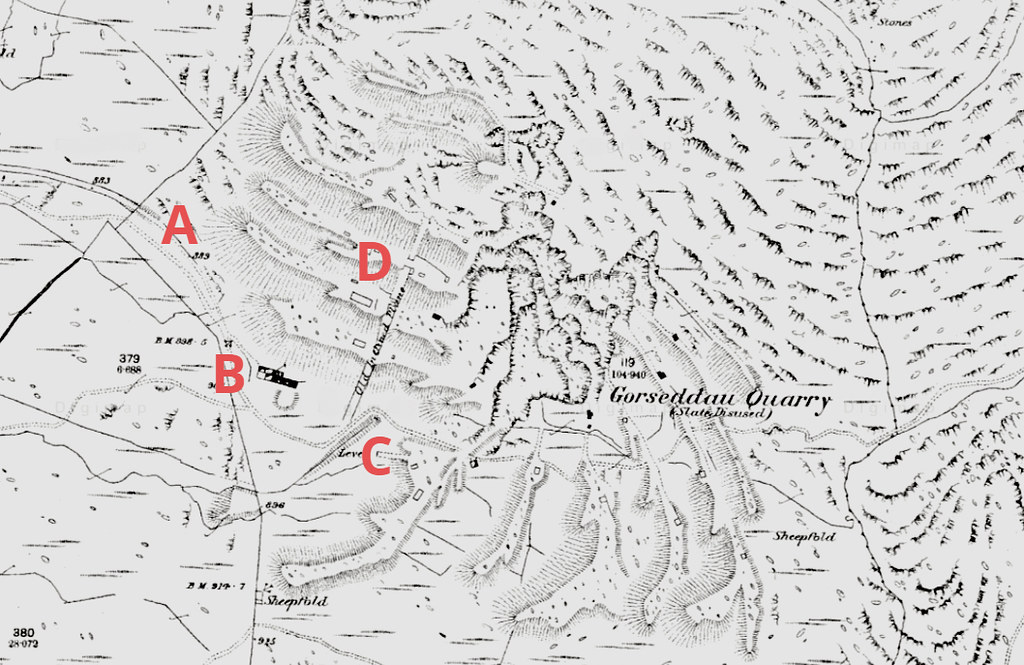
Key:
A – Corbelled retaining wall
B – Barracks, offices and smithy
C – Drainage adit
D – Main incline
There was heavy investment in the quarry’s infrastructure between 1854 and 1857, when the Gorseddau Tramway was built. The high-spec 13km of tramway linked the quarry to the sea at Porthmadog. Designed by the Scottish engineer, James Brunlees, the three-foot gauge tracks used a combination of horses and gravity to transport the slate to the three-storey water-powered slate slab mill at Ynysypandy (also designed and constructed by James Brunlees), before being transported to the harbour at Porthmadog. The mill operated for just nine years between 1857 and 1866. After abandonment, it had its roof removed in 1906. Another addition in 1857 was the hamlet of Treforys, overlooking the Lynn Cwm Ystradllyn. Built for the quarrymen, it consisted of 18 pairs of two-room cottages. Set on boggy land, life was hard here and in 1859 there was an outbreak of smallpox.
Unfortunately the resulting slate was found to be of poor quality and resulted in the venture being something of a commercial failure for its owners. By 1859, 200 men were producing less than 1,400 tons of slate per annum - seven tons per man year. This rose slightly to 2,140 tons in 1860, but the writing was on the wall and the quarry closed sometime in 1867.
“Plas Llyn”, the now demolished former quarry manager’s house:

Google Maps image of the quarry:
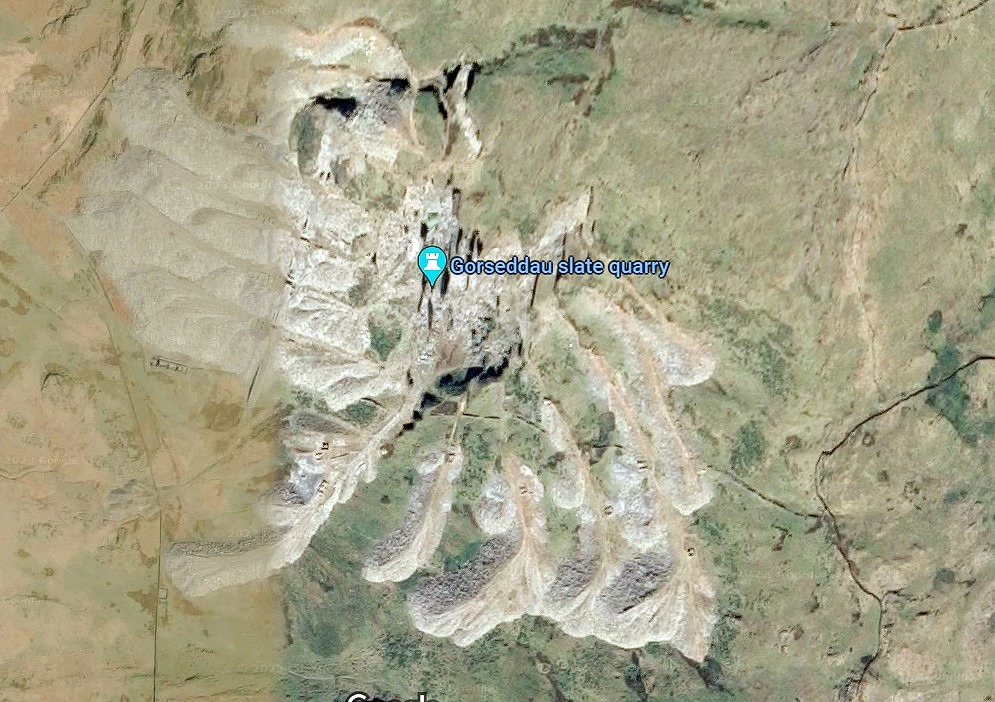
There’s an excellent video here:
2. The Explore
I’ve looked out over the tranquil waters of Llyn Cwm Ystradllyn many times, starring in awe at the extensive slate workings that lay beyond it. It wasn’t until this last April that I made the beautiful 5km round hike up to the quarry and back. So one crisp but sunny Spring morn, I parked up at the Tyddyn-mawr café and set off on foot. The footpath follows the route of the Gorseddau Tramway and was pretty wet, at one point turning into a stream. However the hike was well worth the effort. The scale of the workings here are staggering, given the short period the quarry was open. The really strange thing is that all that is left is slate. I didn’t see a single piece of iron in the quarry, in sharp contrast to many other quarries in North Wales.
3. The Pictures
On the drive up it’s impossible to miss the looming ruins of the Ynysypandy slate mill:
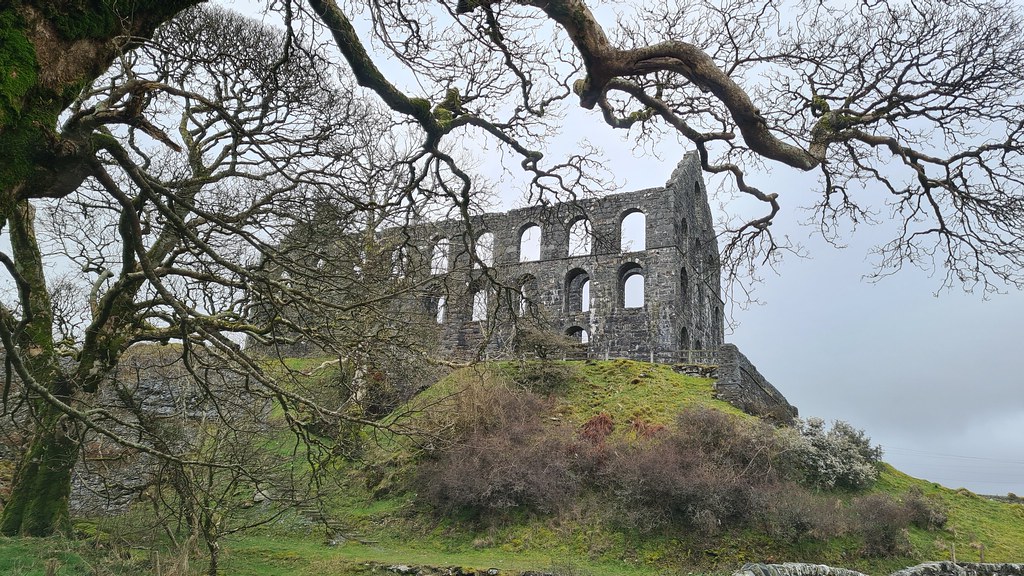
On the hike up you pass the ruined farm of Talyllyn:
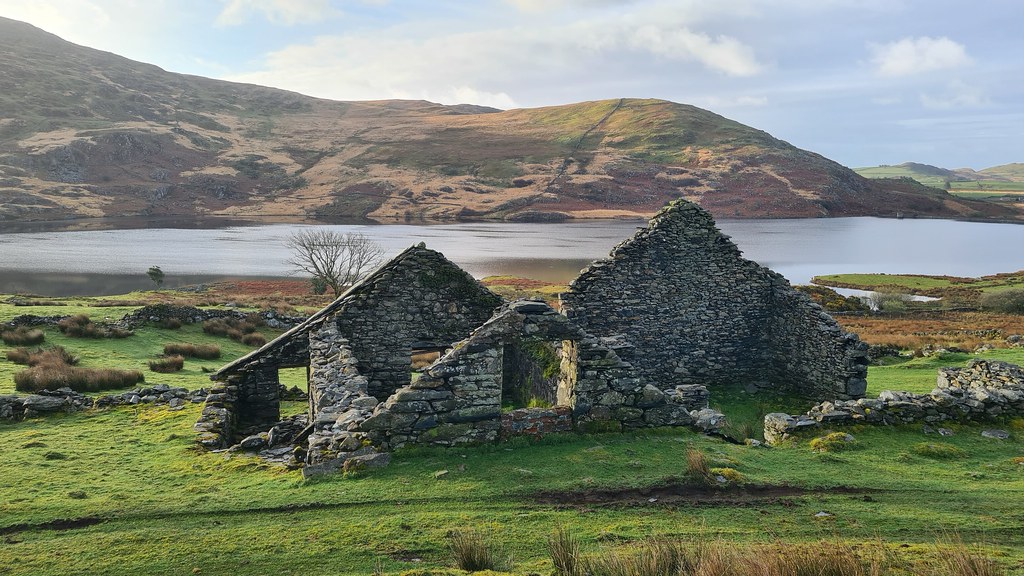
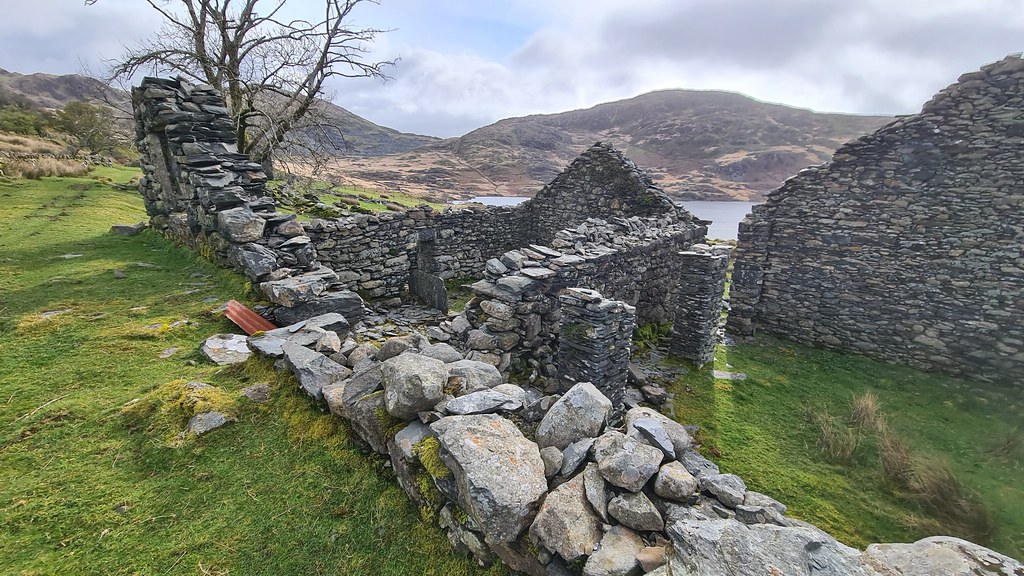
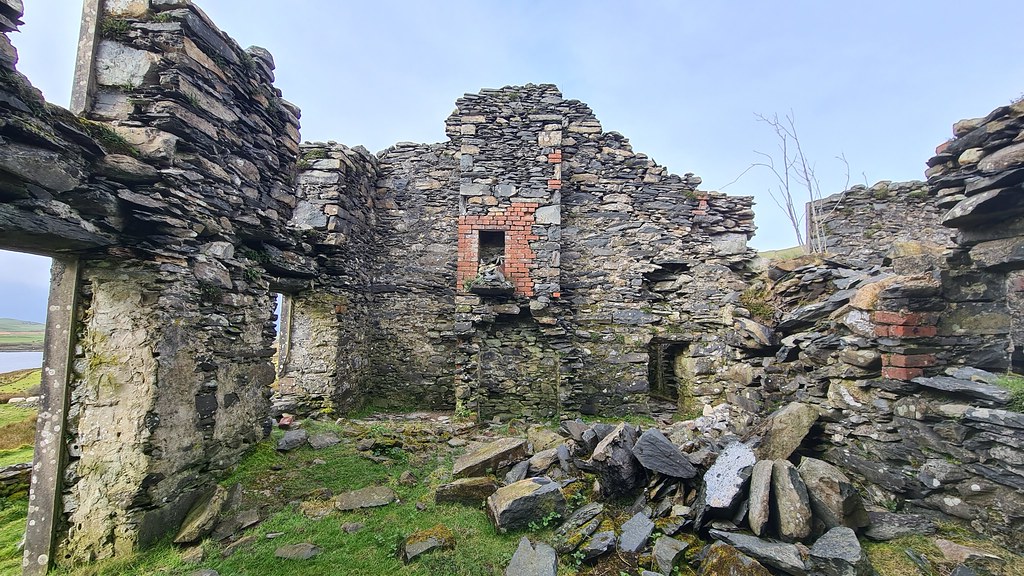
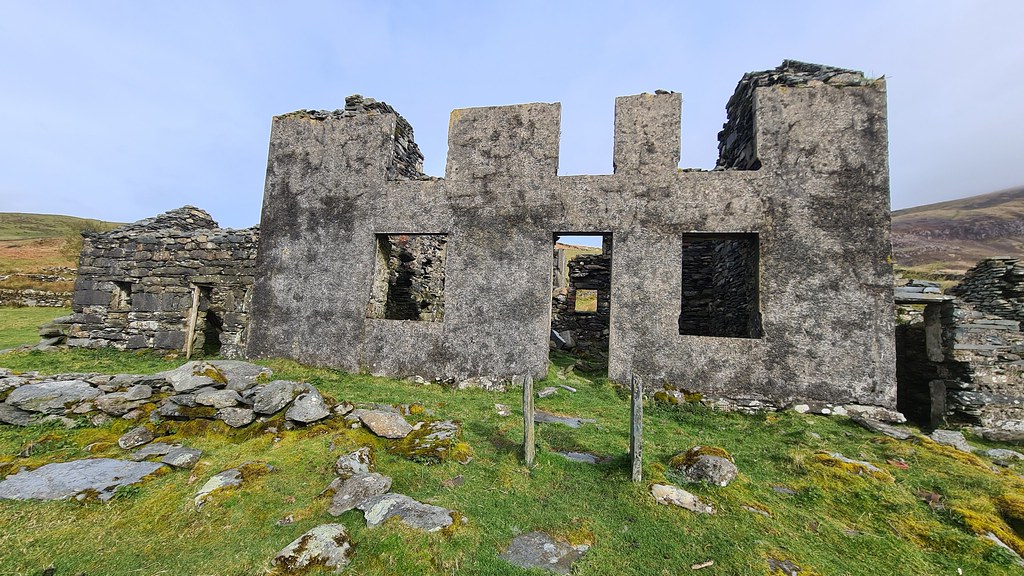
Onwards down the track:
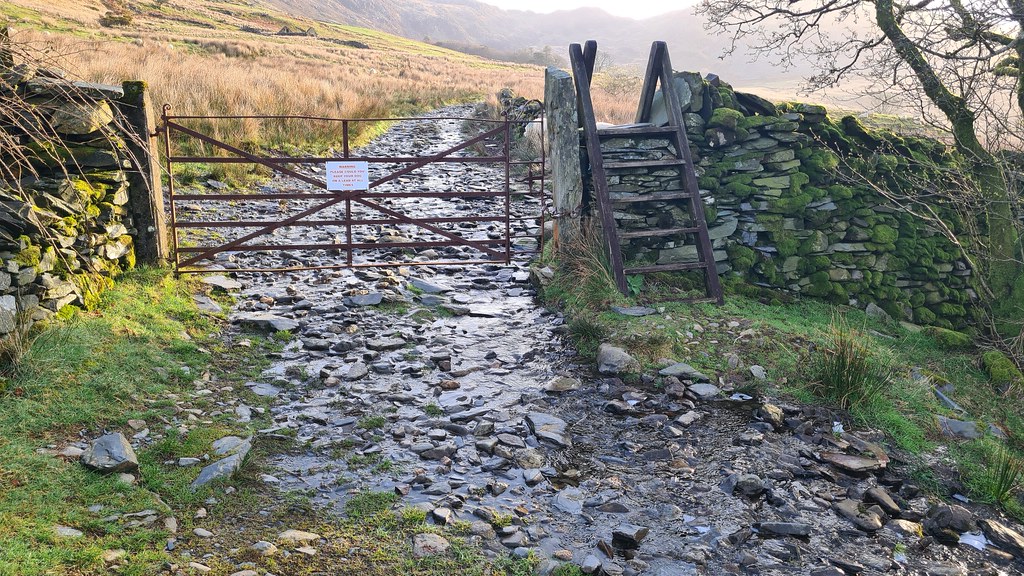
Still some way to hike as you can see from the quarry in the background:
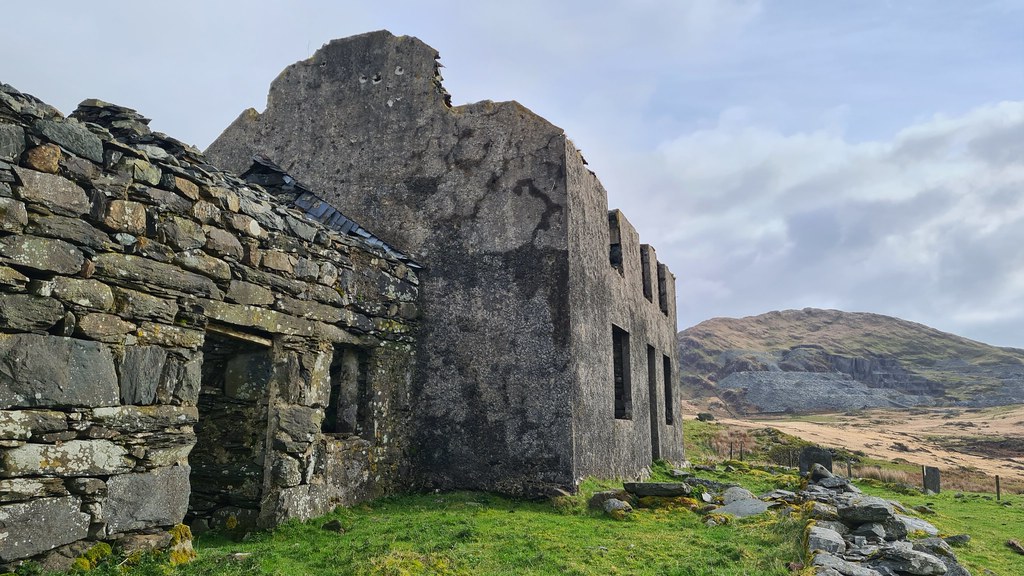
One of the outbuildings of the now demolished Quarry Manager’s house, Plas Llyn:
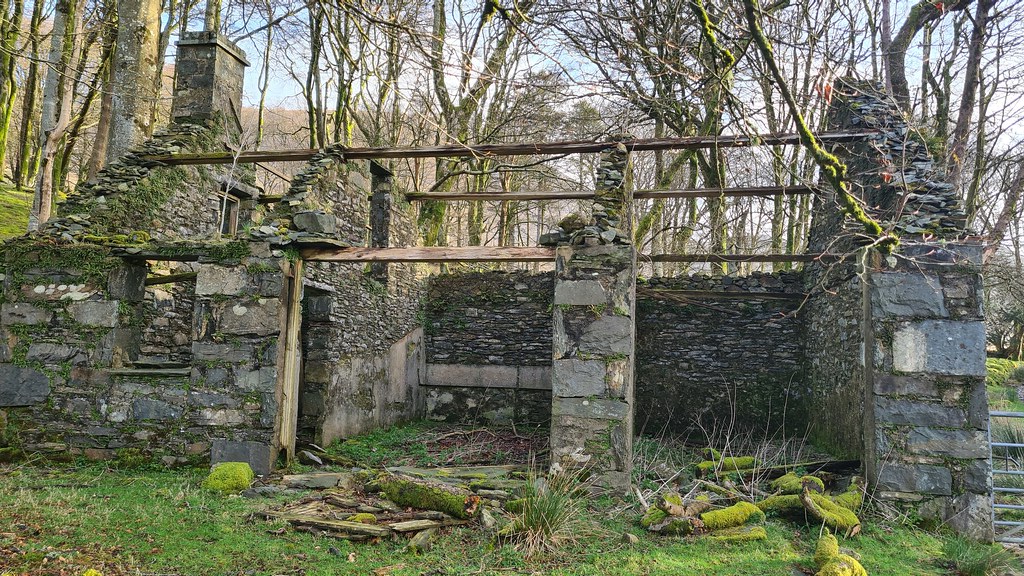
The first thing of note is this overhanging wall, built to prevent slate waste from sliding onto the tramway:
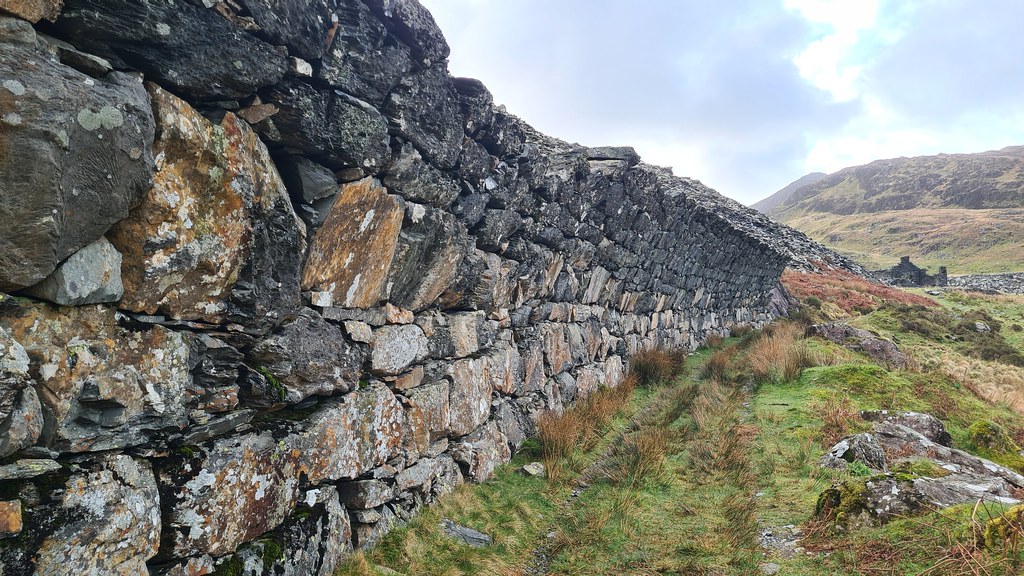
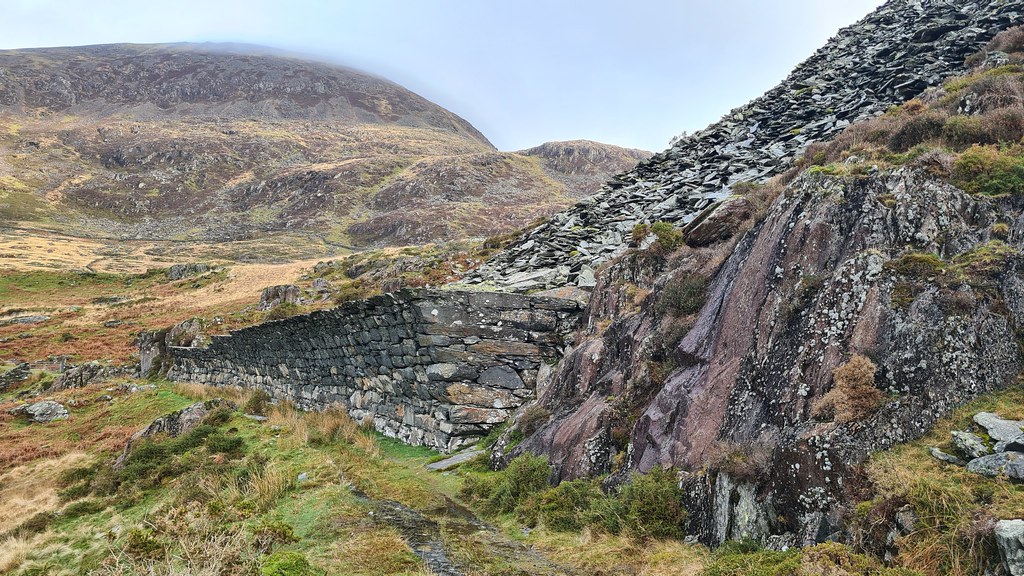
On to the barracks, smithy and offices:
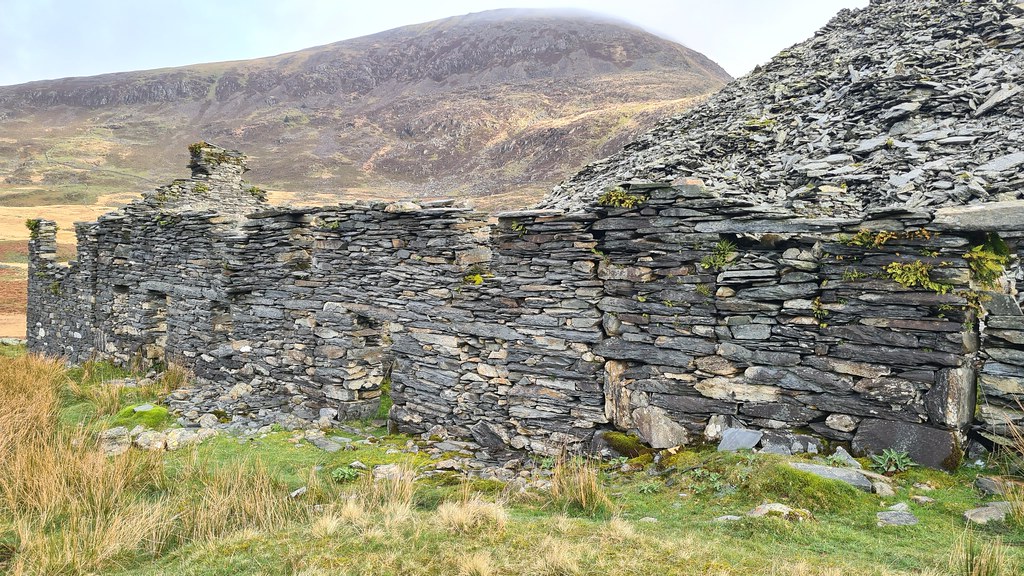
Inside the barracks:
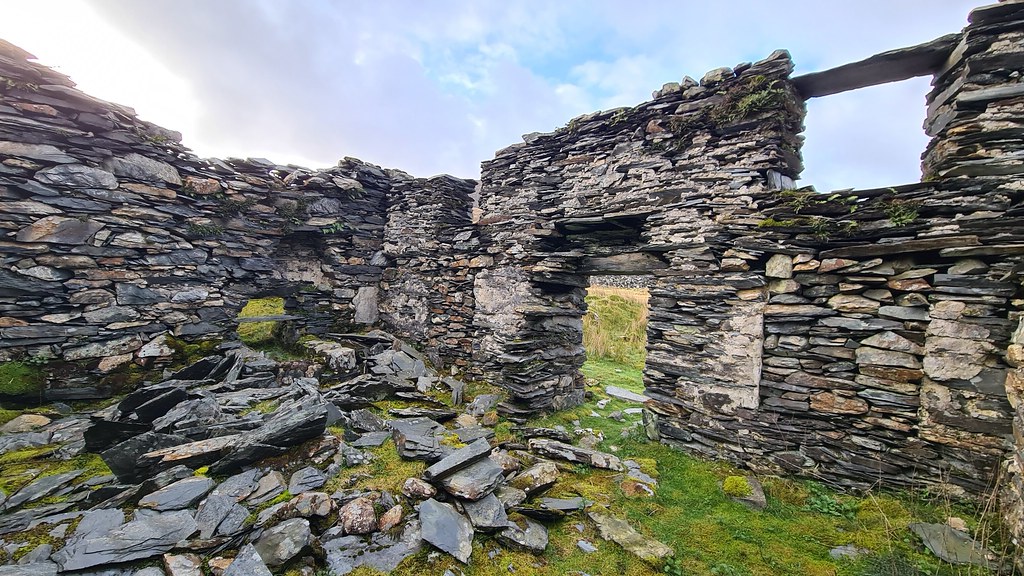
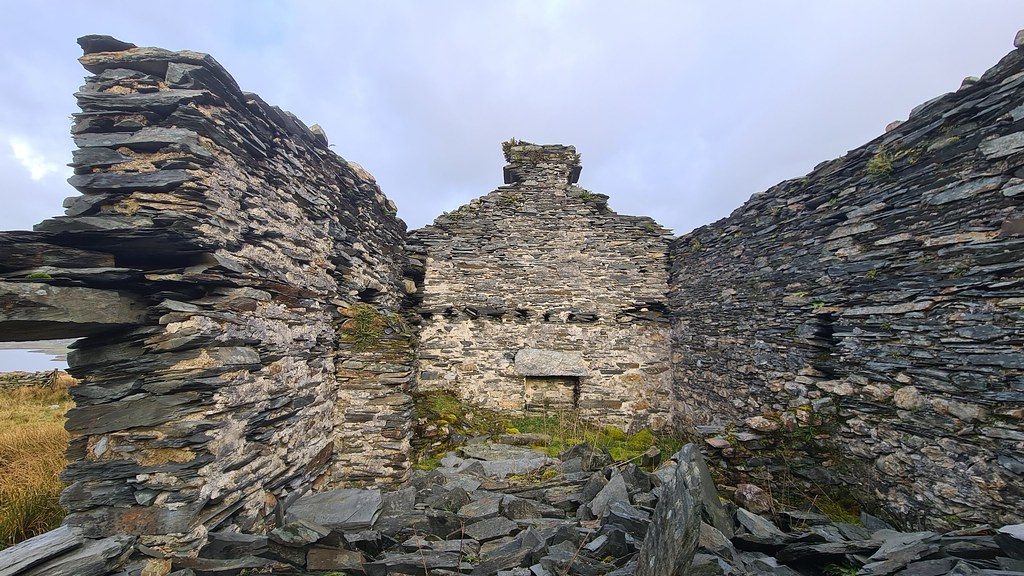
Close-up of the drainage adit with on inspection, is impassable sadly:
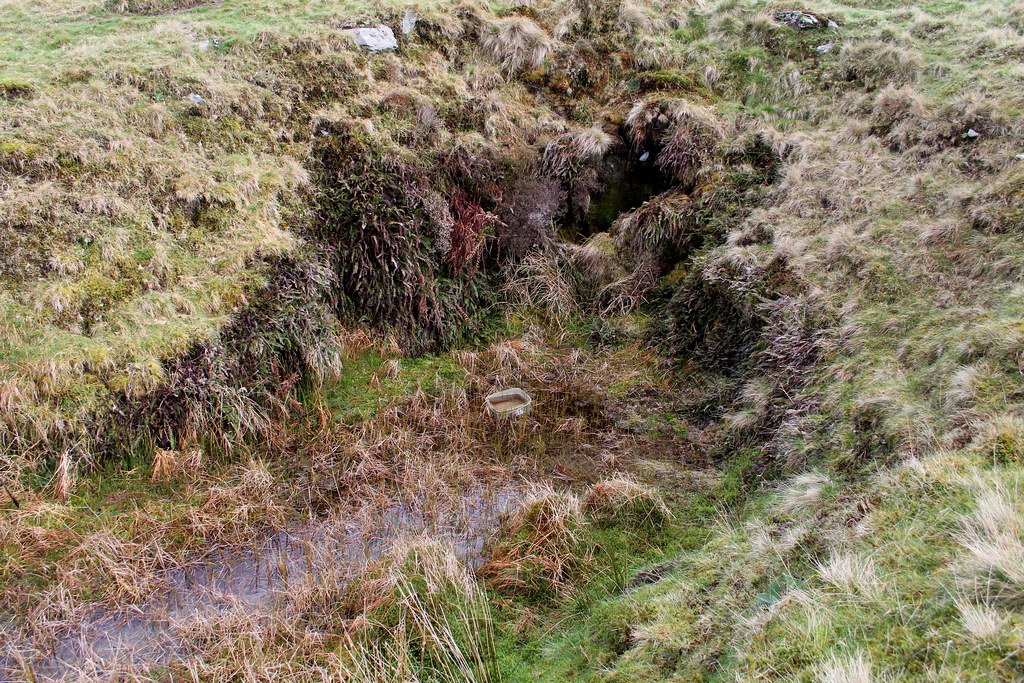
Nice light at this time in the morning:
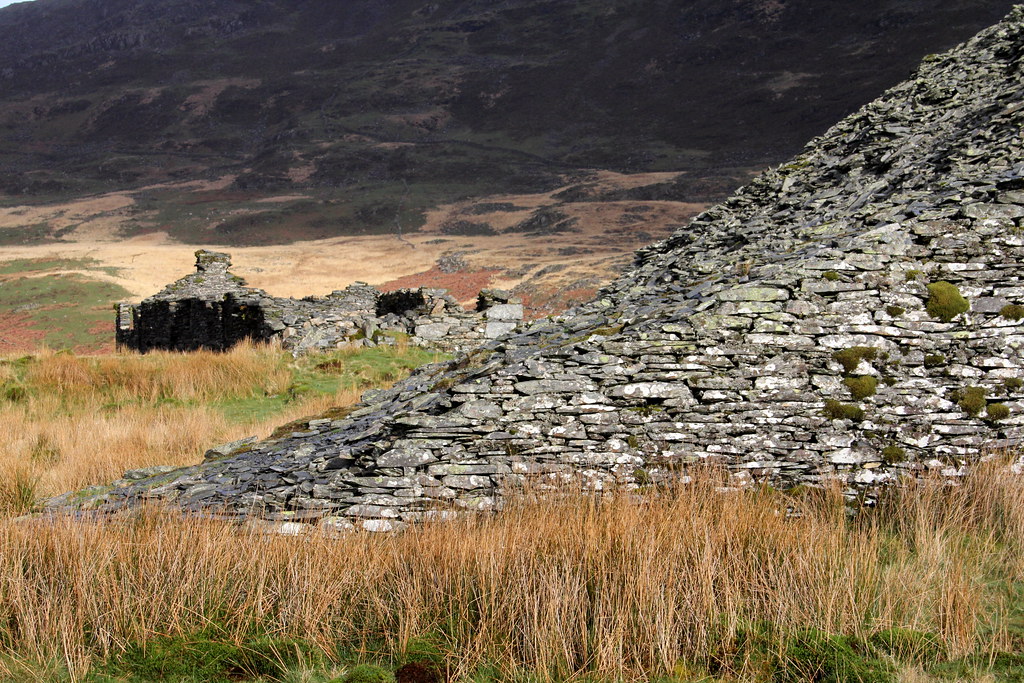
Bottom winding house:
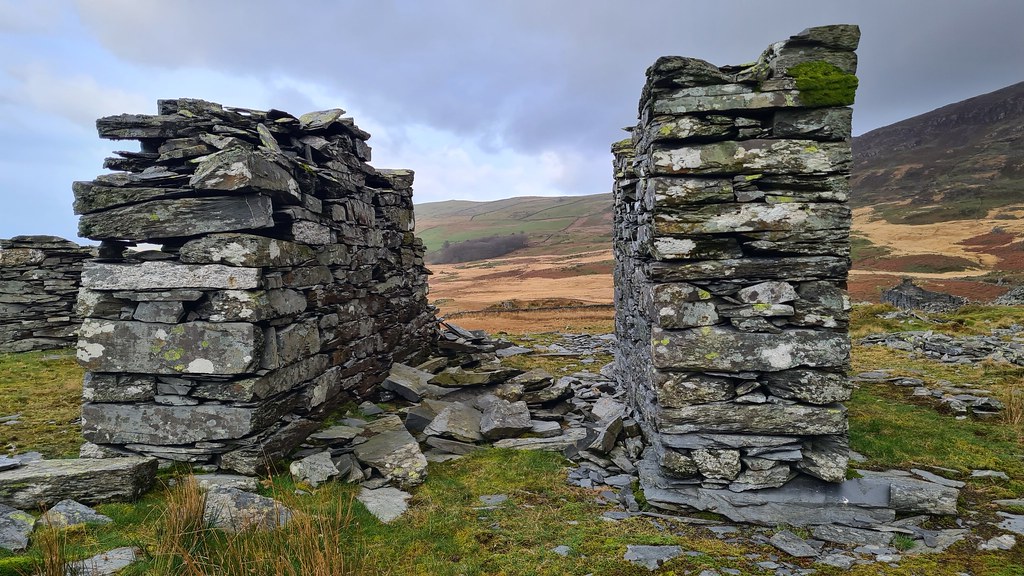
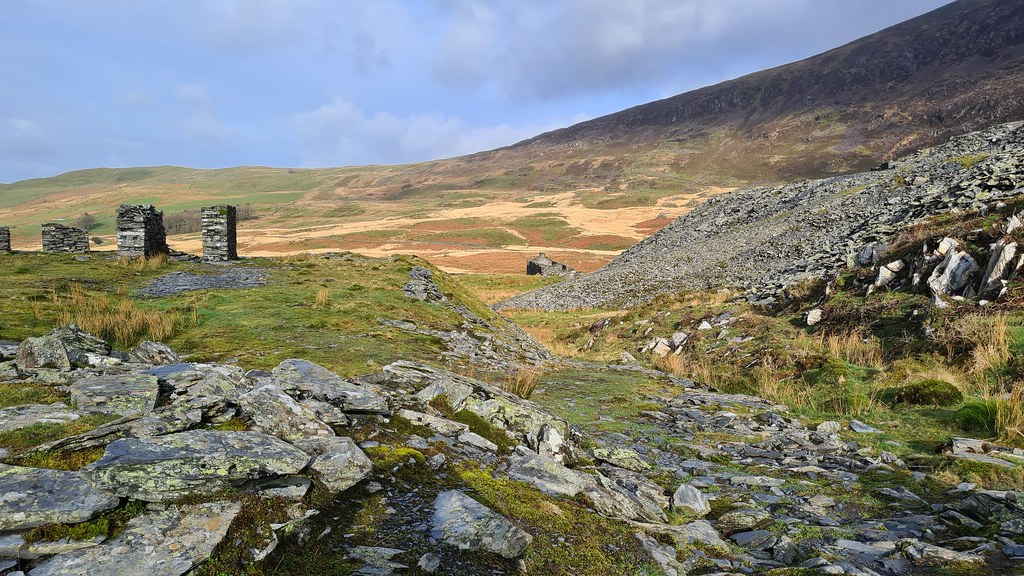
And looking back over the sea of slate by the incline:
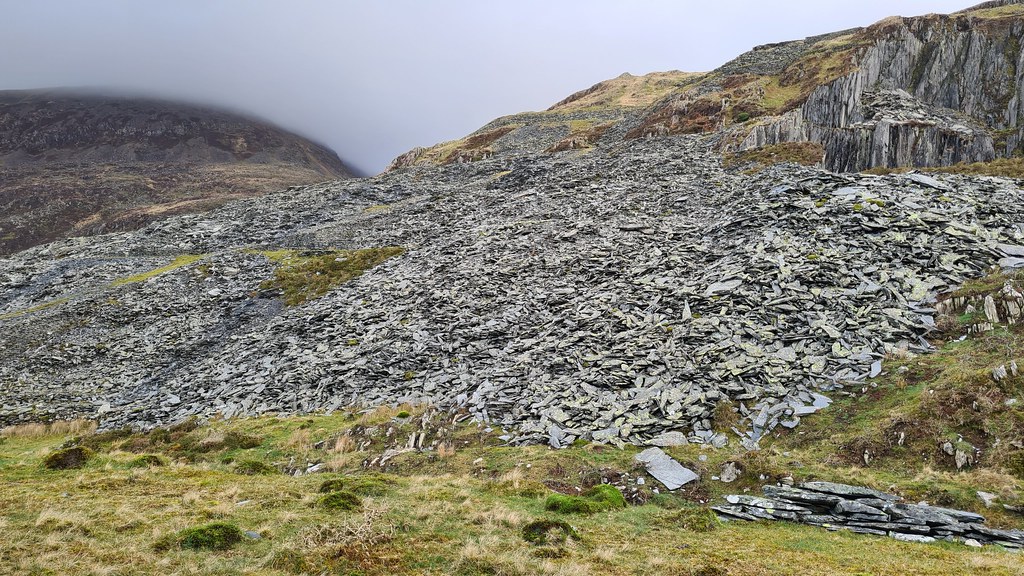
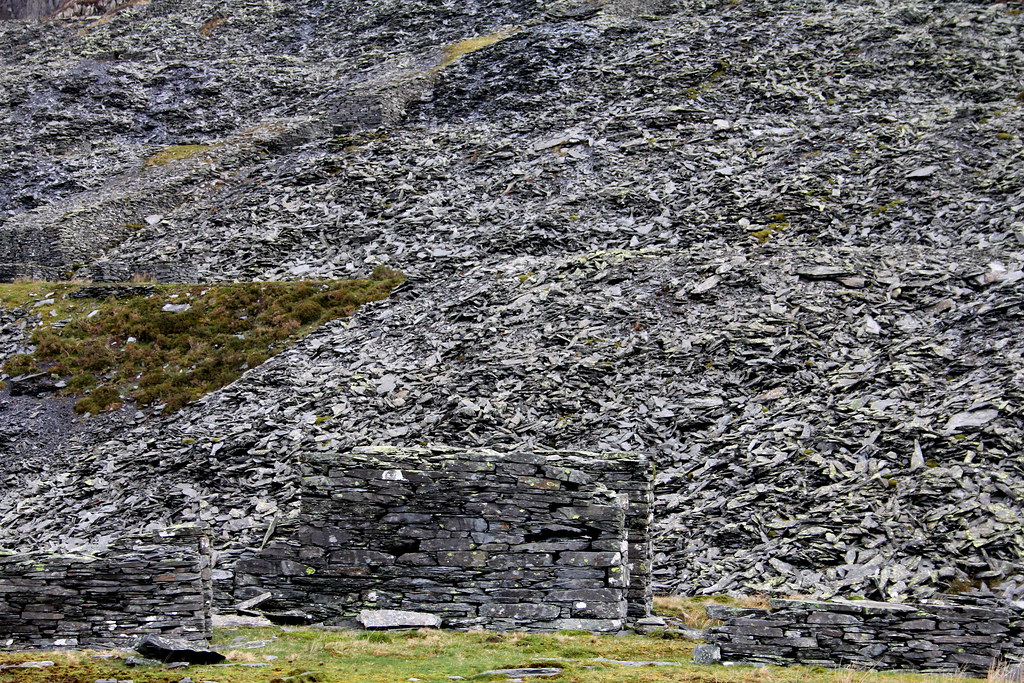
Main incline, draining adit in the foreground and barracks on the left:
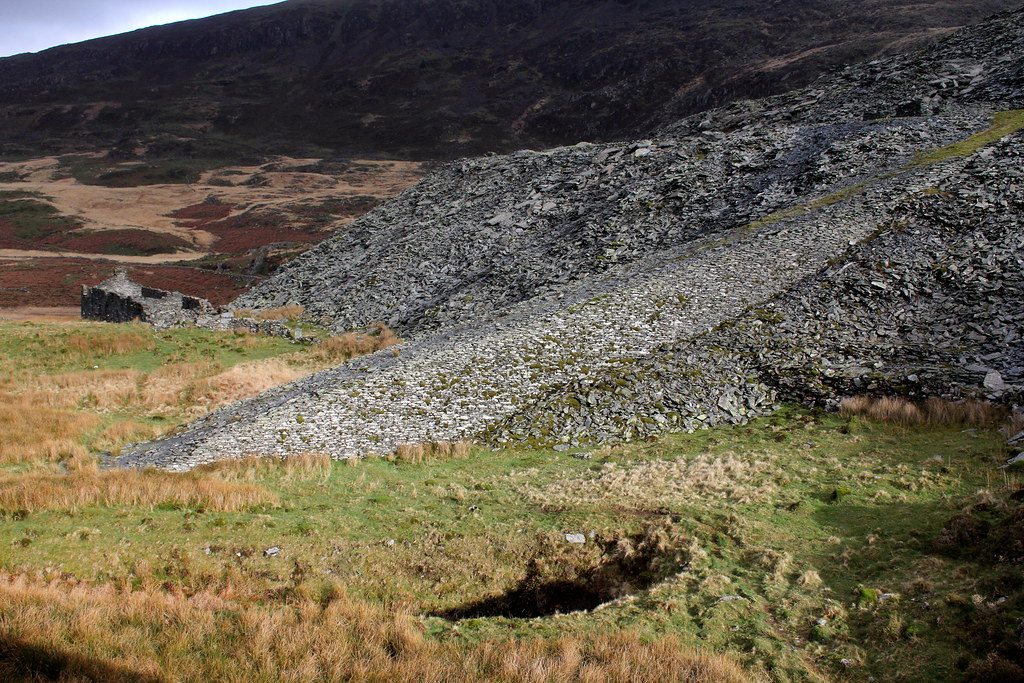
Quarry off to the left:
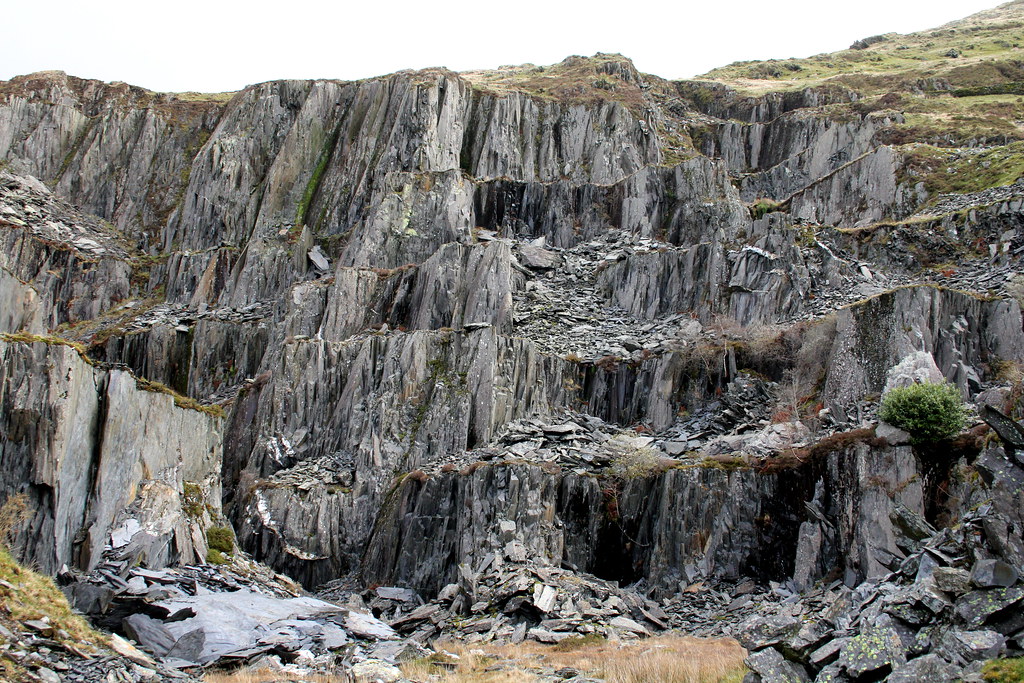
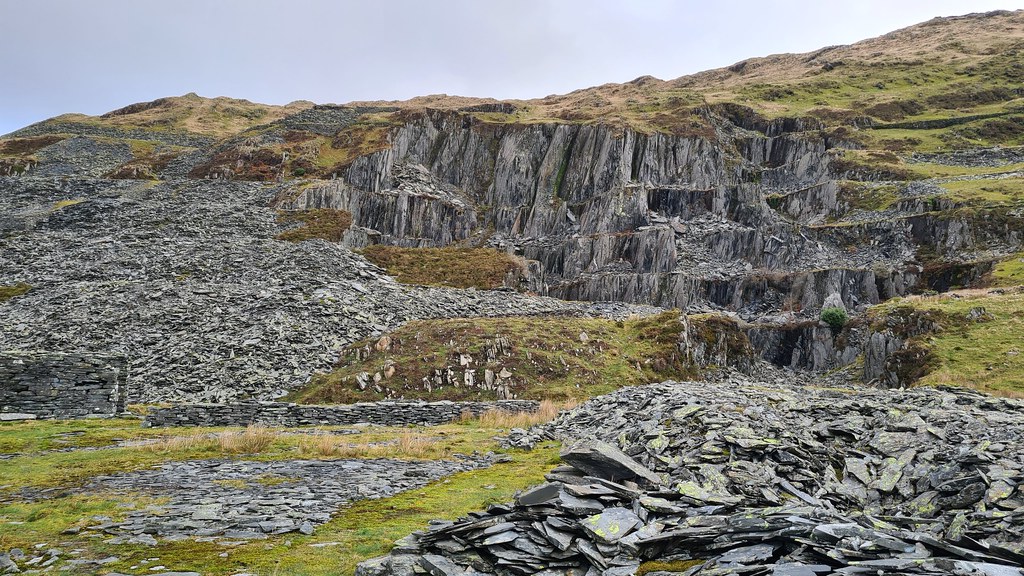
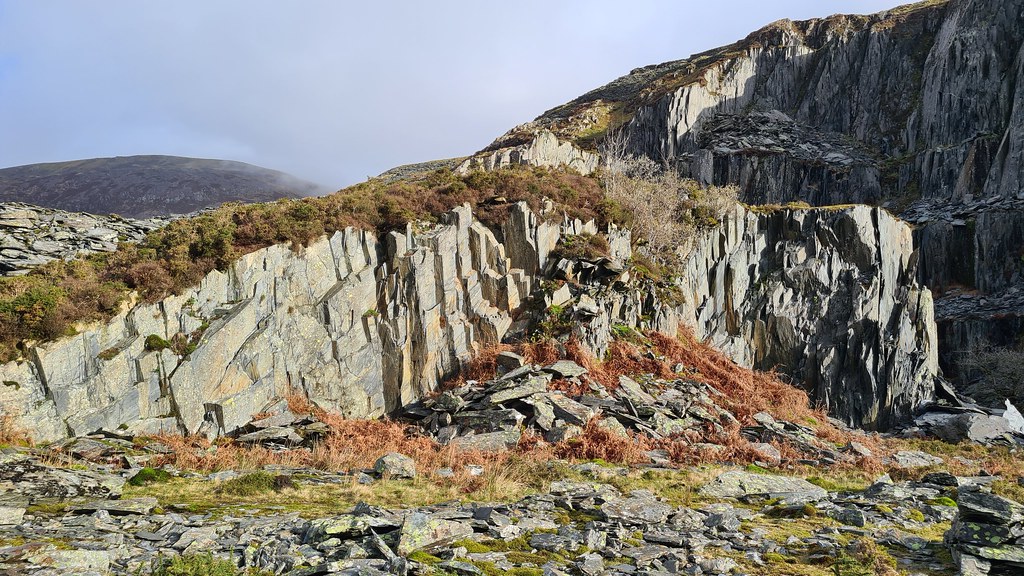
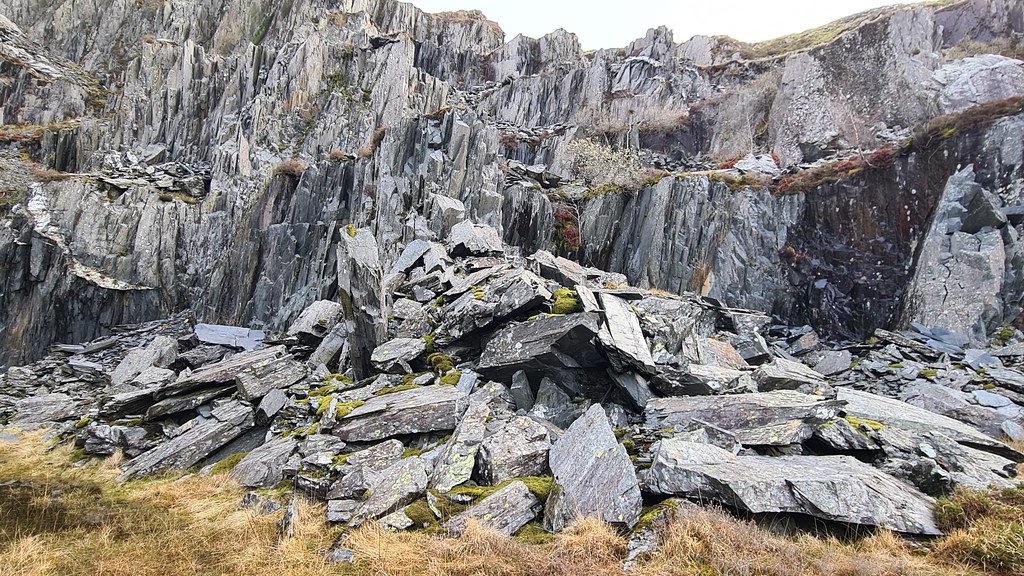
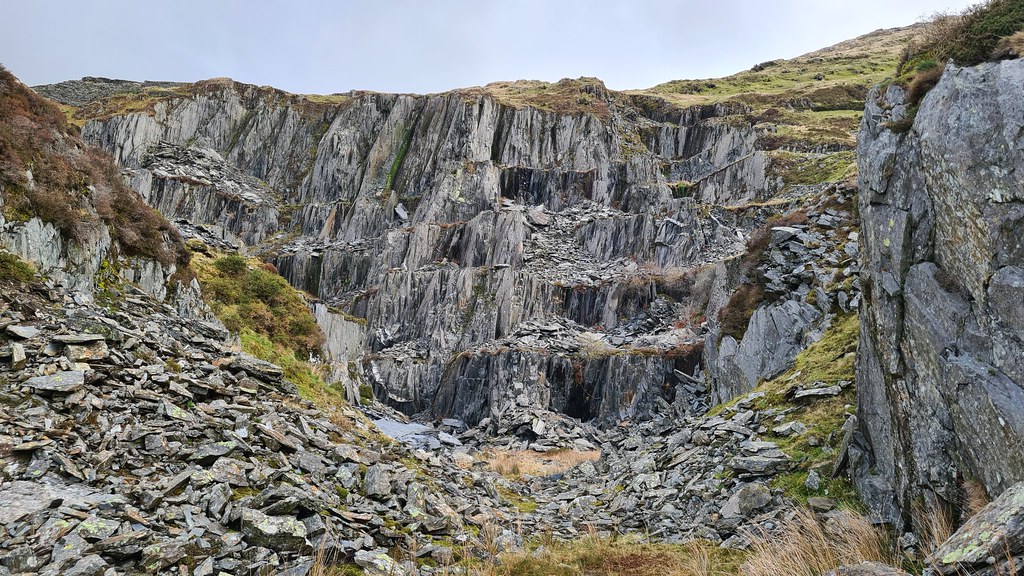
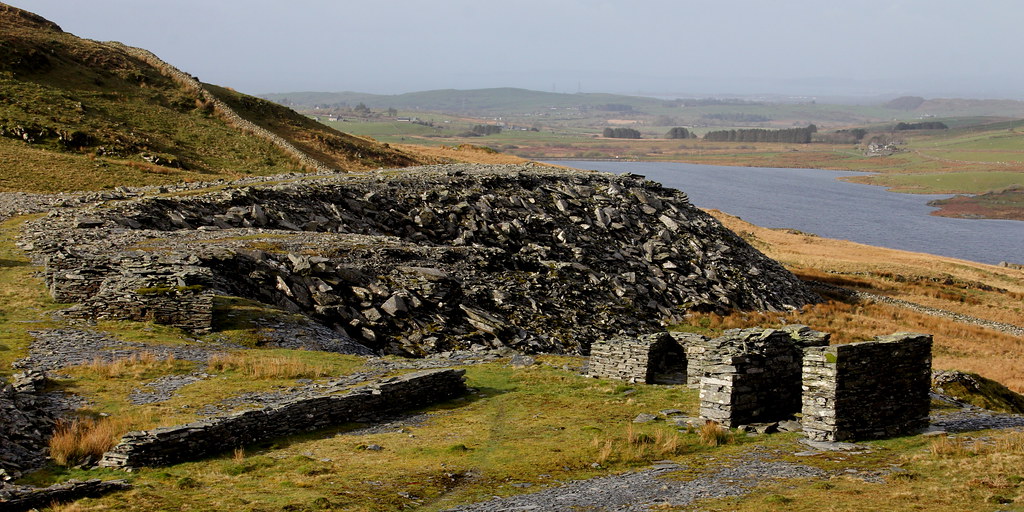
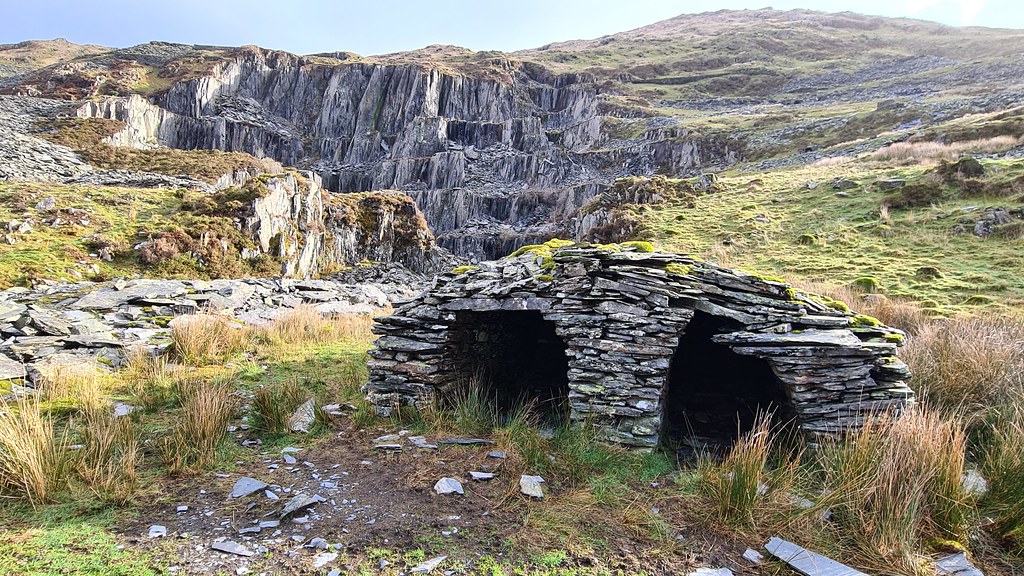
Cwm Ystradllyn is a picturesque valley located six miles north of Portmadog, Gwynedd, North Wales. Here can be found Gorseddau Slate Quarry, at the head of a remotely located valley. Quarrying first started here in 1807, but only on a very modest scale. The quarry was latterly offered for sale in 1836. However, it wasn’t until two decades later that things started to move up a gear, between 1855 and 1857 during the “Golden Age” of the slate industry in Gwynedd. Robert Gill and John Harris took out a £2,000 lease on the site and established the Bangor & Portmadoc Slate and Slate Slab Company. Raising over £125,500 from investors, they enlisted the services of Henry Tobias Tschudy von Ulster, a Bavarian mining engineer, as the quarry was worked extensively using a technique pioneered at Penrhyn Quarryin, using stepped benches known as ‘galleries’. From the top of the quarry to the bottom, a sequence of eight terraces were connected by a spinal counter-balance incline. Each terrace then contained a gallery, trimming sheds, trimming waste tips and rubble tips stretching out beyond.
Extract from 1880 O/S map showing the quarry as abandoned:

Key:
A – Corbelled retaining wall
B – Barracks, offices and smithy
C – Drainage adit
D – Main incline
There was heavy investment in the quarry’s infrastructure between 1854 and 1857, when the Gorseddau Tramway was built. The high-spec 13km of tramway linked the quarry to the sea at Porthmadog. Designed by the Scottish engineer, James Brunlees, the three-foot gauge tracks used a combination of horses and gravity to transport the slate to the three-storey water-powered slate slab mill at Ynysypandy (also designed and constructed by James Brunlees), before being transported to the harbour at Porthmadog. The mill operated for just nine years between 1857 and 1866. After abandonment, it had its roof removed in 1906. Another addition in 1857 was the hamlet of Treforys, overlooking the Lynn Cwm Ystradllyn. Built for the quarrymen, it consisted of 18 pairs of two-room cottages. Set on boggy land, life was hard here and in 1859 there was an outbreak of smallpox.
Unfortunately the resulting slate was found to be of poor quality and resulted in the venture being something of a commercial failure for its owners. By 1859, 200 men were producing less than 1,400 tons of slate per annum - seven tons per man year. This rose slightly to 2,140 tons in 1860, but the writing was on the wall and the quarry closed sometime in 1867.
“Plas Llyn”, the now demolished former quarry manager’s house:

Google Maps image of the quarry:

There’s an excellent video here:
2. The Explore
I’ve looked out over the tranquil waters of Llyn Cwm Ystradllyn many times, starring in awe at the extensive slate workings that lay beyond it. It wasn’t until this last April that I made the beautiful 5km round hike up to the quarry and back. So one crisp but sunny Spring morn, I parked up at the Tyddyn-mawr café and set off on foot. The footpath follows the route of the Gorseddau Tramway and was pretty wet, at one point turning into a stream. However the hike was well worth the effort. The scale of the workings here are staggering, given the short period the quarry was open. The really strange thing is that all that is left is slate. I didn’t see a single piece of iron in the quarry, in sharp contrast to many other quarries in North Wales.
3. The Pictures
On the drive up it’s impossible to miss the looming ruins of the Ynysypandy slate mill:

On the hike up you pass the ruined farm of Talyllyn:




Onwards down the track:

Still some way to hike as you can see from the quarry in the background:

One of the outbuildings of the now demolished Quarry Manager’s house, Plas Llyn:

The first thing of note is this overhanging wall, built to prevent slate waste from sliding onto the tramway:


On to the barracks, smithy and offices:

Inside the barracks:


Close-up of the drainage adit with on inspection, is impassable sadly:

Nice light at this time in the morning:

Bottom winding house:


And looking back over the sea of slate by the incline:


Main incline, draining adit in the foreground and barracks on the left:

Quarry off to the left:











